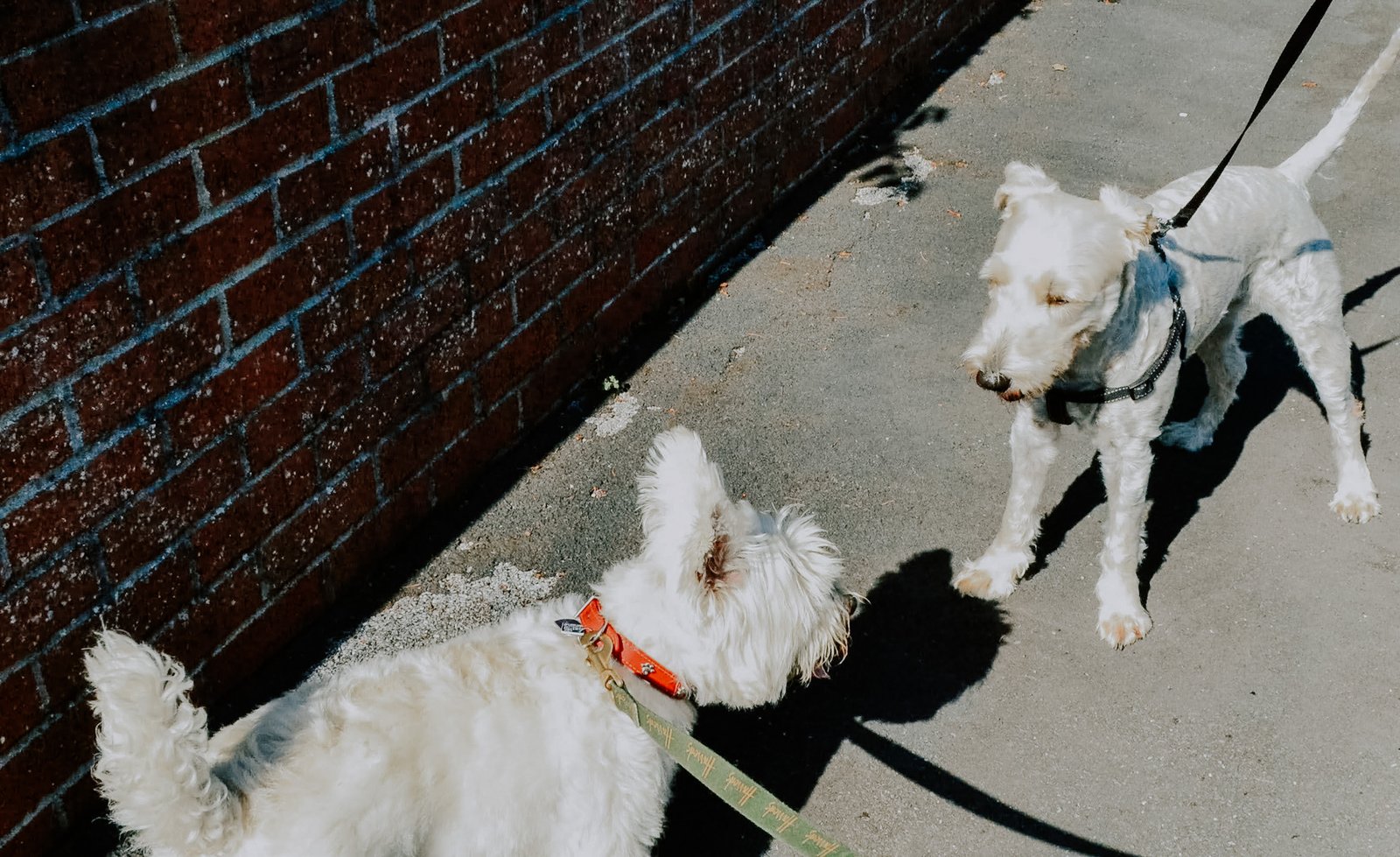How Often Should You Walk Your Dog?
Pet owners often wonder how much time they should spend walking their dogs every day. They need it as much as you do, and they’d love you for it too.
The frequency of your dog’s walks depends on their breed, age and activity level. For optimum health and wellbeing, walk your dog 20 minutes per walk, three times a day at least. Observe how energetic your dog is and how they do in their walks.
If you’re looking to give your dog the best health, walking is a very important part of their daily routine and it also helps with bonding. Doggie walks will be not only something they’ll appreciate but will also help them live for a long time.
How Frequently Should You Walk Your Dog?
Walking your dog depends on many factors. It’s recommended to walk your dog for 15 – 20 minutes a day so they do not get anxious or destructive. You want to complete a full hour of walking around, so that’s 3 to 4 walks per day, at least. Some sporting dogs would need up to 2 hours of walks, so take that into account too.
There are a few factors in play when you consider the number of walks you can give your dog.
You should consider:
- Your dog’s breed
- Your dog’s age
- Level of energy
- Your personal schedule
Let’s look at these details deeper to understand why you need to give them that quality time.
Your Dog’s Breed
A dog’s breed has a good influence on how much walking they need. Every dog breed has a different bone structure, muscle density, and activities the breed is used to doing. This detail means there’s a difference between the walks every dog breed needs.
Working and sporting dogs need more walks than average. Breeds like German Shepherds, Retrievers, and Pointers need a good chunk of exercise. You’re looking at 2 hours of walking and running around to keep up their cardio.
Sporting dogs are great if you like to hike around, run or do some extended outdoor activities. They have a lot of energy that they can unleash as you need them. Sporting dogs will also beg you to go out a lot if you don’t take them out for walks.
Terriers, even though most of them tend to be smaller in size, can require a lot of daily activity since they were bred to hunt and could be on the go all day.
Smaller lapdogs, on the contrary, still need exercise but not as much. You could make do with around 30 minutes to an hour of walking outside.
Let’s say you’re not sure if your dog is sporting or not, what do you do? The easiest way to deal with your dog’s walking needs is to do an hour to 1.5 hours per day. Why this much?
Letting your dog stretch their legs for an extended amount of time is great for its health. Dogs like committing their time to you. Unlike humans, being sedentary can be more taxing on their bodies. They can gain unnecessary weight, which could give them breathing issues and other conditions.
By letting your dog walk the needed amount per day, they can get enough cardio to regulate their body’s daily exercise needs. It also helps them stay active and limber.
Your Dog’s Age
When walking your dogs, you want to consider their age. Like humans, older dogs have a lower tolerance to heavier or longer physical activities. Depending on the age of your dog, you would want to add or subtract the length of their walks.
Younger dogs below five years old would need a fair amount of walks. They want to play and run around, so give them at least an hour walk a day. Their sustained energy can keep up longer walks and even higher impact exercise.
Middle-aged dogs between five to eight years old can handle the same length of walks, but not the same speed and intensity. You would want to give them a good 20 minutes of doggie walks per session, two to three times a day.
When you’re walking your middle-aged dogs, it’s best to jog slower than usual. Stay in parks and on flat areas where they can play and jump around. They will appreciate the walks that you give them and they’re unlikely to sustain injuries.
Older dogs more than nine years old should have very low intensity, shorter walks. Their bodies are at a stage where they can’t handle extreme workloads. You want to prevent making their knees work too much which can be painful.
For dog walks, older dogs will appreciate around 20-minute walks twice a day. See if they can take it or if they are feeling obvious fatigue after the walks. Pace them and see how they respond.
Your Dog’s Energy Levels
Every individual dog has a different energy level. This energy varies according to their temperament and their fitness too. You would want to gauge your fur baby’s energy level to know how many walks they need.
Most dogs can handle a good 20 to 30 minutes of walks per session. Some dogs can take as much as an hour per session if they have great physical health. A few dogs would even love to do a bit of day hiking with you.
For overweight or even obese dogs, 10 minutes can be their limit. This is the exact reason why you want to keep your dogs exercising, as they can keep moving. You’re also giving them a good bit of extra cardio that can slim them down.
To figure out the number of walks your dogs can do, take them out on a walk and observe. See if your dog is panting or struggling to keep up. Look out for when they start showing signs of fatigue.
A good sign that your dog is struggling is that they lose interest in walking. If your dog is starting to sniff around, it means they’re showing signs of fatigue. Now, start heading back home and look at how they pace.
Is your dog slowing down? If they are, they likely had too much exercise, so you need to keep the walks shorter next time.
You need to remember that a dog’s energy levels can grow the healthier they get. Much like humans, dogs can build better endurance with better cardio. You should not expect your dog to be in tip-top condition if they’ve been sedentary for a while. Take it easy on them, and let them get back into the groove in a gradual manner.
See if your dog needs any assistance or support. Older dogs will need a dog lifting harness if they are struggling to move after their doggie walk.
Your Schedule
The last consideration you need for determining how often you need to walk your dog is you. Your schedule matters in the grand scheme of things, considering you will walk your dog.
Humans need at least 150 minutes of exercise per week, be it brisk walking or running. You can get your dog to exercise as much as you, so that should be ok. The problem?
Modern life can be very busy and people will always have something to do. Squeezing another hour or two out of it is almost impossible. While that’s not optimal, that’s not a problem if you can afford a dog walker to do the work.
Dog walkers can take your dogs out for you.
If you can’t afford to get your puppy a dog walker, the next best thing is to take them outside. Aim to get them moving around somewhere between 10 to 15 minutes a day or at least three times a week. Supplement the lack of walks by letting them play in your yard or at home with extra activities.
Engage your dog in at least 15 minutes of activities inside your home. Never keep your dog too sedentary, however.
Dogs don’t like getting bored. It can have a bad effect on their mental health and they like exploring their surroundings. Dogs thrive better if they get to move more.
If you’re doing any sport, you can bring your dog with you instead of doing separate walks. Running, hiking, biking, and even obedience training can be a good way to sharpen them up. Make sure to keep them hydrated too.
Walk Your Dog to Keep them Happy
Walking your dog is not something complicated. It’s best to allow some time for your little fur baby so they can stretch their legs and enjoy being out. Try and let them walk for at least 30 minutes to an hour a day.
Regular walks and play can have a significant role in your dog’s development. As they grow older good physical activity allows them a better range of movement. Ensure that the dog walks you give them are up to their energy levels and their needs.
If you can’t find time to walk your dog, hire a dog walker. If you can’t hire a dog walker, set aside a minimum time to walk, run, and play with your dog.
Walking your dog is your responsibility as a dog owner. You owe it to your loyal puppy to give them the best care and help them stay strong and healthy.
Thanks for reading this article. Keep up to date with Westie Wisdom for more great posts about our canine friends.
Check out our Resources page where we put together a collection of products and links to organizations for Westie owners. We only recommend products that we believe will enhance your Westie’s quality of life.



